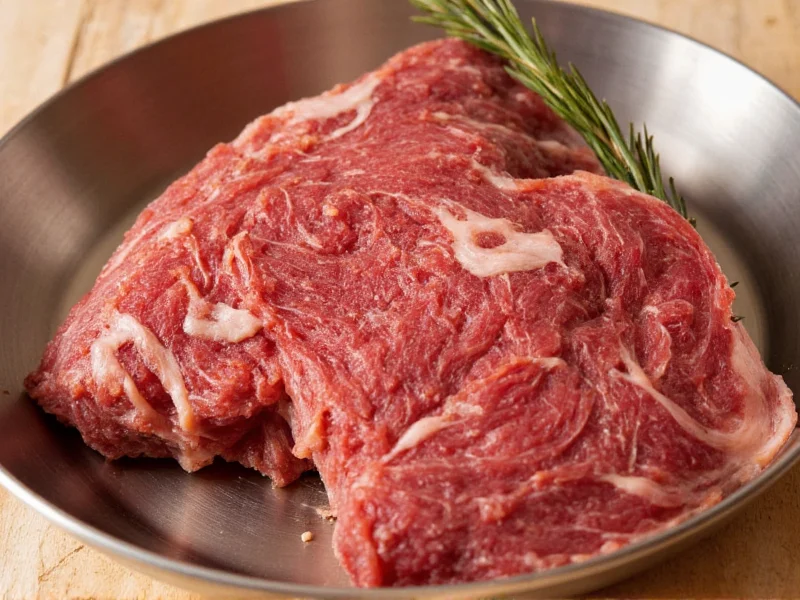The distinctive flavor of authentic pastrami begins with its dry rub—a carefully balanced spice mixture that transforms ordinary brisket into that iconic deli favorite. Unlike wet brines that dominate modern recipes, traditional New York-style pastrami relies on a dry rub method that creates a flavorful crust while maintaining the meat's natural juices. Understanding the science behind each component in your dry rub for pastrami makes the difference between mediocre results and that perfect balance of spicy, savory, and aromatic notes that defines exceptional homemade pastrami.
Why Dry Rub Outperforms Wet Brine for Authentic Pastrami
Many modern recipes substitute wet brines for the traditional dry rub method, but purists argue this fundamentally changes the texture and flavor profile. A proper dry rub for pastrami creates a pellicle—a tacky surface layer that helps smoke adhere during the cooking process. This dry curing technique draws out moisture initially, then allows the meat to reabsorb seasoned juices, resulting in more concentrated flavor and superior texture compared to wet brining.
Essential Components of an Authentic Pastrami Dry Rub
Each ingredient in your dry rub for pastrami serves a specific purpose in creating that distinctive flavor profile. Understanding these roles helps you adjust the recipe to your taste while maintaining authenticity.
| Ingredient | Primary Function | Traditional Proportion |
|---|---|---|
| Kosher salt | Curing agent, moisture control | 1½ cups per 5 lbs brisket |
| Coarse black pepper | Signature heat and aroma | 3 tablespoons |
| Coriander seeds | Citrusy undertone, balances heat | 2 tablespoons |
| Crushed red pepper | Controlled heat without bitterness | 2 tablespoons |
| Mustard seeds | Complex tang, traditional element | 1 tablespoon |
Step-by-Step Guide to Creating the Perfect Dry Rub
Follow these precise steps to prepare an authentic dry rub for pastrami that delivers consistent results:
- Toast whole spices: In a dry skillet over medium heat, toast coriander seeds, mustard seeds, and allspice berries for 2-3 minutes until fragrant. This crucial step activates essential oils that raw spices lack.
- Grind to consistency: Cool toasted spices completely, then grind in a spice grinder to a coarse texture—not powder. The texture affects how the rub adheres and penetrates the meat.
- Combine dry ingredients: In a large bowl, mix ground spices with black pepper, red pepper flakes, garlic powder, and paprika. Whisk thoroughly to ensure even distribution.
- Add salt last: Incorporate kosher salt separately to prevent premature moisture release from the salt crystals.
Applying Your Dry Rub for Maximum Flavor Penetration
The application technique significantly impacts your final product. For optimal results with your dry rub for pastrami:
- Pat the brisket completely dry with paper towels before application
- Apply 1½ cups of rub per 5 pounds of meat, pressing firmly into all surfaces
- Place meat in a large food-safe bag or non-reactive container
- Cure in refrigerator for 5-7 days, flipping and reapplying rub every 48 hours
- After curing, rinse excess rub under cold water before smoking
Common Dry Rub Mistakes and How to Avoid Them
Even experienced home cooks make these critical errors when preparing dry rub for pastrami:
- Using pre-ground spices: Freshly ground whole spices provide superior flavor complexity. Pre-ground spices lose volatile compounds within weeks.
- Incorrect salt ratio: Too little salt won't properly cure; too much creates an overly salty product. Stick to 1½ cups kosher salt per 5 lbs brisket.
- Insufficient curing time: Authentic flavor development requires minimum 5 days—3 days produces inferior results.
- Skipping the rinse: Excess surface rub creates an unpleasant gritty texture if not rinsed before smoking.
Variations for Different Palates and Dietary Needs
While traditional dry rub for pastrami follows specific proportions, thoughtful modifications can accommodate different preferences without sacrificing authenticity:
- Milder version: Reduce red pepper flakes to 1 tablespoon and add 1 teaspoon celery seed for depth without heat
- Kosher adaptation: Ensure all spices are certified kosher and use non-iodized salt for traditional preparation
- Smoky variation: Add 1 tablespoon smoked paprika (not liquid smoke) for enhanced smokiness without compromising the dry rub method
- Sugar-free option: Traditional pastrami contains no sugar, but some modern recipes add brown sugar—omit for authentic preparation
Storage and Shelf Life of Prepared Dry Rub
A properly made dry rub for pastrami maintains peak potency for different durations depending on preparation:
- Whole spice blend (unground): 6-8 months in airtight container
- Ground spice blend: 2-3 months before noticeable flavor degradation
- Applied to meat: Maximum 7 days curing time for optimal results
Store your dry rub in a cool, dark place away from heat sources. Glass jars with tight-fitting lids preserve freshness better than plastic containers. For extended storage, freeze the rub in an airtight container for up to 12 months—thaw completely before use to prevent moisture absorption.











 浙公网安备
33010002000092号
浙公网安备
33010002000092号 浙B2-20120091-4
浙B2-20120091-4